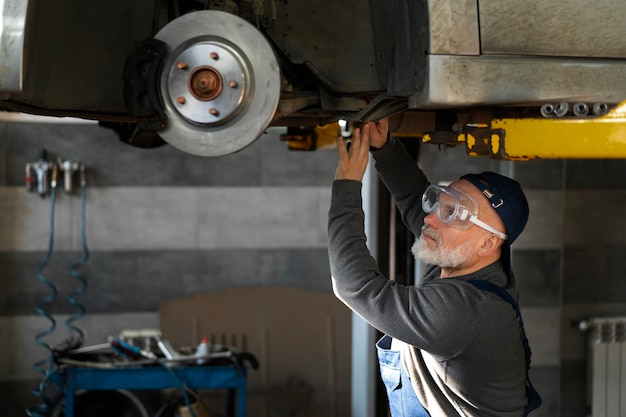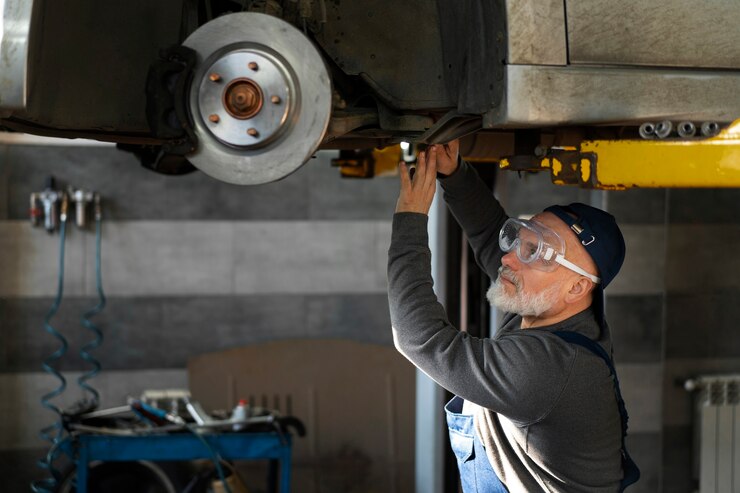Introduction: In the realm of automotive engineering, two crucial components dictate the ride quality and handling of a vehicle: the suspension and steering systems. These systems work hand in hand to ensure a smooth and controlled driving experience, absorbing bumps and maintaining stability on the road. Let's delve into the mechanisms behind car suspension and steering system in this simplified guide.

Understanding Car Suspension:
- The suspension system of a car comprises various components such as springs, shock absorbers, struts, and control arms.
- Springs, whether coil or leaf springs, bear the weight of the vehicle and provide flexibility to absorb bumps and uneven surfaces.
- Shock absorbers, also known as dampers, control the movement of the springs, preventing the vehicle from bouncing excessively.
- Struts are a type of suspension system that combines a shock absorber and a spring into one unit, commonly found in the front suspension of many vehicles.
- Control arms connect the suspension components to the vehicle's frame, allowing for controlled movement and maintaining stability during cornering and braking.
Types of Suspension Systems:
- There are primarily two types of suspension systems: independent suspension and dependent suspension.
- Independent suspension allows each wheel to move independently, enhancing ride comfort and handling.
- Dependent suspension systems, such as solid axles, connect both wheels on the same axle, making them rise and fall together.
The Role of Car Steering:
- The steering system of a car is responsible for directing the vehicle's movement according to the driver's input.
- Common steering systems include rack and pinion, recirculating ball, and power-assisted steering.
- Rack and pinion steering is the most prevalent type, consisting of a rack connected to the steering wheel and a pinion gear attached to the steering shaft.
- Recirculating ball steering employs a worm gear mechanism to convert rotational motion into linear motion, providing a smoother steering feel.
- Power-assisted steering systems utilize hydraulic or electric assistance to reduce the effort required by the driver when turning the steering wheel.
How Suspension and Steering Work Together:
- The suspension system ensures that the tires maintain optimal contact with the road surface by absorbing shocks and vibrations.
- Proper suspension setup enhances steering responsiveness and stability, especially during cornering and sudden maneuvers.
- Steering components, such as tie rods and steering knuckles, interact with the suspension system to facilitate controlled movement and precise steering input.
Importance of Regular Maintenance:
- To ensure optimal performance and safety, it's essential to maintain and inspect the suspension and steering systems regularly.
- Routine checks should include inspecting for worn-out components, leaks in the steering fluid, and proper alignment of wheels.
- Timely replacement of worn-out parts and proper wheel alignment can prolong the lifespan of the suspension and steering systems while improving overall driving experience.
Conclusion: The suspension and steering systems of a car play pivotal roles in providing a comfortable and safe driving experience. By understanding the fundamental principles behind these systems and conducting regular maintenance, drivers can ensure their vehicles remain roadworthy and responsive. From absorbing bumps to steering with precision, the synergy between suspension and steering is crucial for a smooth journey on the road.
Website: https://www.arabianstartyres.com/
Google Business Profile: https://maps.app.goo.gl/xdeF4PPvMwpL9UXJ9
Name: arabianstartyres
Phone: 97125551541
Address: Shop No 1,2,3 - Abu Dhabi - United Arab Emirates
E-mail ID:[email protected]
Facebook: https://www.facebook.com/ArabianStarTyreTrading
Instagram: https://www.instagram.com/arabian_tyres/
LinkedIn: https://www.linkedin.com/company/arabianstartyretrading
Twitter: https://twitter.com/TyreArabian





Comments